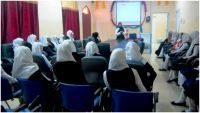24-25 فبراير/شباط 2014
 Aim: The Qualhat healthy village project focuses on improving and developing the social and health lifestyle of the community of Qualhat village.
Aim: The Qualhat healthy village project focuses on improving and developing the social and health lifestyle of the community of Qualhat village.
Location: Qualhat village is an ancient village in Oman, situated approximately 25 km to the northwest of Sur City. The population of the village is approximately 1155.
Duration: The project commenced in 2006 and is ongoing.
Funding: The project was established with funding from the Ministry of Health and the World Health Organization (WHO).
Lead agency: The Ministry of Health, in collaboration with the WHO.
Partners: The project benefits from partnerships with a range of organizations including the Ministry of Education, the local municipality, Oman Woman's Association, social development, and community support groups.
Key focus: The project focuses on five key determinants of health: physical activity; tobacco use; accidents (traffic and household); the village environment; and social income.
Key focus
- The project focuses on four key aspects of health: physical activity; healthy eating; tobacco use; and
- Interventions can be broadly grouped into the following three categories: public education, school-based interventions, and community-based interventions.;
Key components for physical activity
- Move for Health programme, including lectures and other health education activities in schools.
- Awareness-raising campaigns in sablla ("place where people are collected together").
- Face-to-face meeting and interactive training for girls and young ladies in the community, delivered by health educators.
- The development of a walking pathway at the coastal region of the village.
- The establishment of five football teams and a local football league, with seasonal competition.
- Annual cycle race for youths.
Evaluation: Annual reports are produced which summarise the activities which have been delivered.
Key findings: The most recent annual reports confirms the completion or delivery of many components of the programme, including the development of the walking pathway at the coastal area of the village, the development of a local garden for physical activity, and the creation of a ‘workroom’ for physical activity specifically for women. In addition, further work is underway including the development of new buildings for physical activity for local schools.
Key factors contributing to the success of the project
- Strong political commitment.
- Working in partnership to implement the project activities.
- Involvement of community leaders and stakeholders of the village during planning and implementing the activities.
Challenges
- Most of the educated people in the village work outside of the village and are therefore only exposed to the project at weekends.
- High burden of interventions within schools.
- Management of community interventions requires specific expertise.




